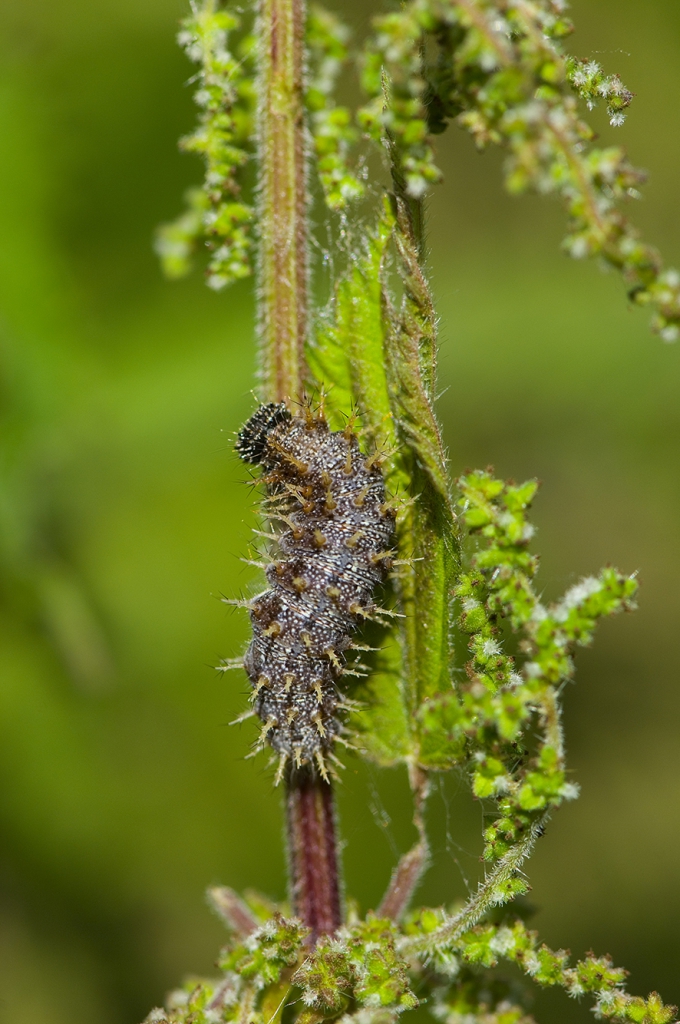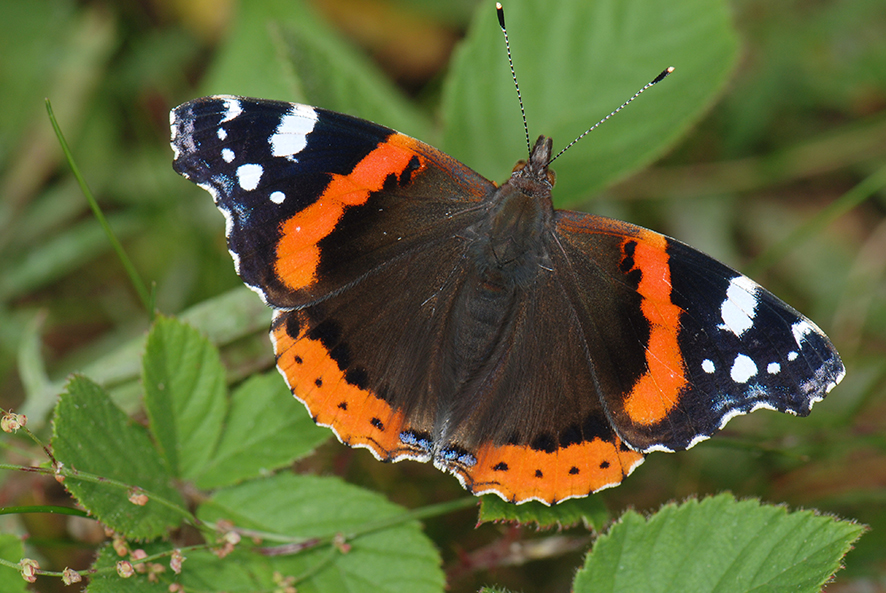Admiral
The admiral is a migratory butterfly
When the birds migrate south during the autumn, they are joined by the admiral. This beautiful butterfly has a 1,500 km journey ahead of it before it lands by the Mediterranean. After the long flight, it mates and lays eggs. Then its life’s mission is complete and the butterfly dies.
The butterflies that hatch in Spain make the opposite journey in the spring. They fly to Denmark, where they mate, lay eggs and die.

”Little butterfly, fly from flower and to flower”……
Go the words of an old Danish pop hit from 1968, and that is exactly what the butterfly uses the summer for. The admirals from Spain arrive in Denmark in June-July.
Eggs are laid on stinging nettles and the larvae feed on the stinging nettle leaves, until they pupate after three weeks. When the butterfly comes out of the cocoon, it is busy getting in shape for its upcoming journey to the south. It sucks nectar from many different plants, especially thistles and eupatorium. In August, the butterfly bush in the garden can be filled with admirals who are filling themselves with nectar.
In autumn, fermented windfallen fruit makes popular food for the butterfly, which may become a little intoxicated. The sugar-containing food is converted into fat in the butterflies, which it can draw on during its journey south.
Facts
The admiral has a wingspan of 55-70 mm. The top side of the wings have a black background, with white spots on the extreme tip of the forewings. There is a bright orange band further into the forewings and on the edge of the rear wings. The admiral's underside has a complicated pattern of multi-coloured swirls and eyespots. The larvae have black and white dots, with a yellow band on each side. They feed on stinging nettle leaves and can conceal themselves in a rolled-up leaf. The admiral is commonly found and widespread throughout Denmark.


